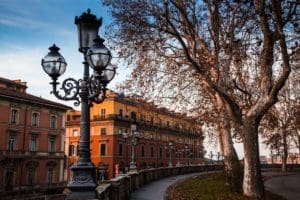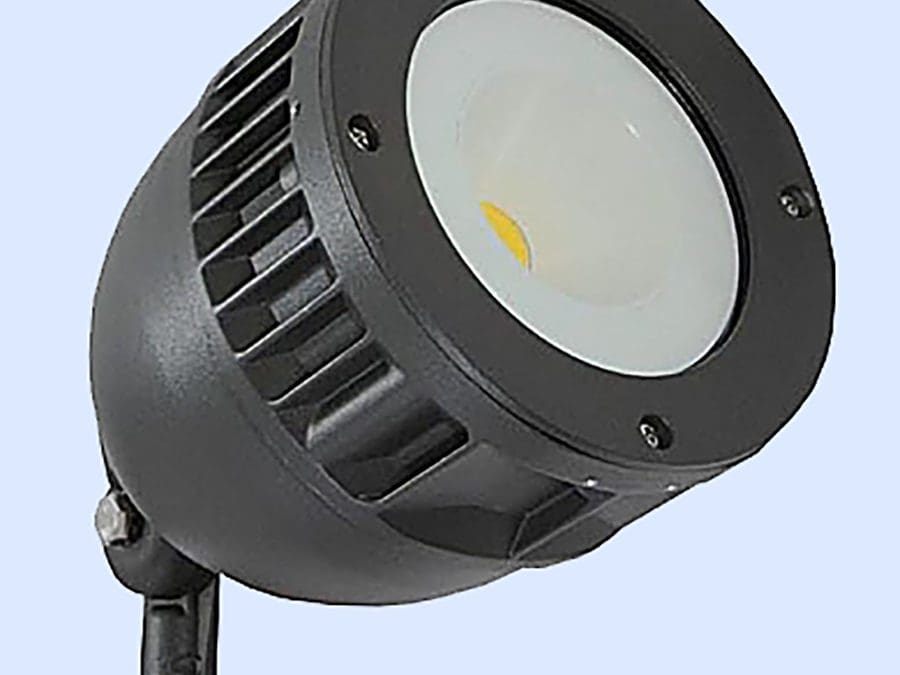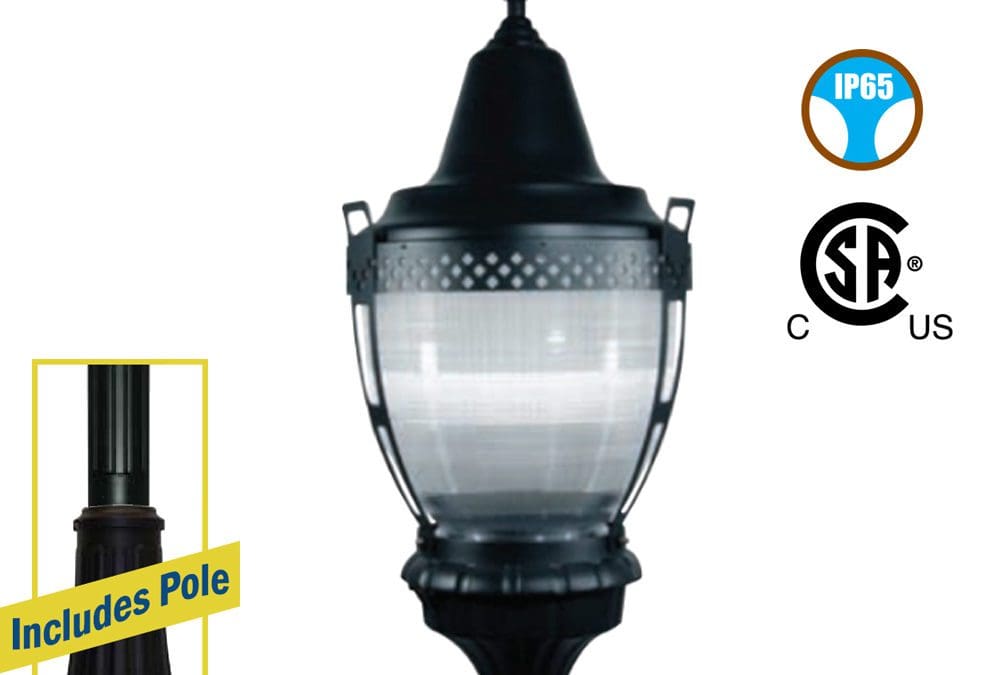Imagine this scenario. You’ve just gotten home from work and you’d like to go for a jog before your spouse gets home. You live right next to a large community park that you enjoy exploring from time to time. It’s early October, so by the time you scarf down some leftovers and put your running clothes on, it’s already getting dark outside. You can see the edge of the park outside your window. A few lonely lamp posts flicker on and off, barely illuminating the concrete walkways that lead deeper into the park. Some of the lights appear to be broken. Your imagination wanders and for a moment you think you see movement at the edge of the trees. It could just be the weather, but a chill comes over you, and you think to yourself, Hey, you know what, maybe it’s too dark for that jog today. You unlace your sneakers and prepare for another night in.
Key Takeaways
-
-
Enhanced Safety and Community Engagement: Well-lit public parks significantly reduce crime and accidents, making them safer for visitors. Strategic lighting encourages community engagement by extending park hours, allowing for evening activities such as jogging, dog walking, and recreational sports.
-
Energy Efficiency and Cost Savings: LED park lighting is a superior solution due to its long lifespan, energy efficiency, and reduced maintenance costs. Features such as photocells, motion sensors, and smart controls optimize energy usage while minimizing environmental impact.
-
Strategic Lighting Design for Maximum Effectiveness: Properly planned park lighting enhances security, aesthetics, and usability while minimizing light pollution. Well-designed layouts, such as evenly spaced fixtures and perimeter lighting, reduce hiding spots for potential criminal activity and improve visibility for all park visitors.
-
Now imagine, in an alternate universe, you’ve just come home and still want to go for that jog. You put on your running shoes and eat a

Photo by Nourdine Diouane.
snack. The park across the street is well-lit with bright LED park fixtures. The energy efficient lighting not only reduces maintenance costs but also ensures better performance. Outdoor lighting enhances visibility and aesthetics, making the park a safe and enjoyable environment. There are people walking their dogs on the paths, adhering to park rules, and children with their families playing on the playground. Despite the fact that the sky is now dark, activities are extended within the community park under the glow of the strategically placed fixtures. There are no dark shadows or places for people to hide behind, and you head out the door for a brisk autumn jog before your spouse arrives home.
An Unprecedented Success by the Recreation Department in Reducing Maintenance Costs
Obviously, the difference between these two imagined scenarios is clear: proper lighting made the difference between our protagonist going for a jog or not. However, the idea that public parks are always safer due to proper lighting is a complex one. Is it a matter of public perception, or does increased visibility inherently increase the safety of a public space? Studies and initiatives over the years have served to cautiously support both ideas. Take the 2008 example of the Inglewood, CA community ridden with public park gang violence. The community banded together and launched its GRYD Summer Night Lights initiative, which aimed to increase nighttime lighting in gang-prone parks and increase nighttime activity programming for members of the community. Crime dropped dramatically, with a reported 40 percent decrease in gang activity and a 57 percent decrease in gang-related homicides. As a result of the program’s success, more city parks have adopted similar lighting and programming initiatives with similar success. This speaks volumes about the effectiveness of community outreach, and people think it may also have to do with the lighting aspect. As for the exact reason that the Summer Night Lights program was so effective, the jury’s still, at least partially, out. The local recreation department played a crucial role in implementing these changes, ensuring that the parks and other public spaces were safe and well-lit for community use.
Why Park Lighting in City Parks?
There are some arguments against certain measures to light parks. It has been noted that only lighting pathways may be dangerous and act as a way for criminals to track the routes of pedestrians. Poorly designed park lighting may also increase certain types of vandalism like graffiti. However, it can also be argued that well-designed park lighting is far superior to poor park lighting and no park lighting at all. Many of these lighting initiatives are guided by city ordinance, which ensures that the lighting meets specific safety and operational standards. There are many theories as to why strategic park lighting is both an effective crime deterrent and a great community building tool.
Artificial lighting can disrupt natural habitats and biological rhythms for both animals and plants, advocating for limited use in conservation areas to prevent lighting pollution. For one, evenly spaced, bright lighting in parks allows daytime activities to extend into the evening hours, such as sports, walking, and cookouts. More people in a public space engaging in recreational activities deters crime by increasing the
perception of safety. If people feel that parks are safe at night, they will be more likely to visit, thus increasing the positive perception of safety in a positive feedback loop. Additionally, proper perimeter and edge lighting means that unsavory individuals will have fewer places to hide to conduct shady business after hours. Overall, most experts agree that an overall increase in lighting in parks and similar spaces is beneficial to the overall environment and community by deterring crime, increasing after-dark community activities, and providing significant energy savings.
Benefits of Public Park Lighting
Proper lighting in public parks is more than just a matter of visibility; it’s a cornerstone of safety and community well-being. When parks are well-lit, the risk of accidents and crime significantly decreases, making these spaces safer for everyone. This sense of security encourages more people to visit and spend time in the park, fostering a vibrant community atmosphere.
Energy-efficient LED lighting plays a crucial role in this transformation. Not only does it reduce energy consumption and costs, but it also minimizes the park’s carbon footprint, contributing to a more sustainable environment. LED lighting is known for its durability and longevity, which means lower maintenance costs and fewer replacements over time.
Beyond safety and efficiency, effective lighting can also enhance the park’s natural beauty. Thoughtfully placed lights can highlight trees, pathways, and architectural features, making the park a more enjoyable and visually appealing space. Incorporating smart lighting technologies allows parks to optimize energy usage, further reducing maintenance costs and ensuring that the lighting system is as efficient as possible.
Lighting Principles for Parks
The primary goal of park lighting is to create safe and secure environments for visitors while preserving the natural ambiance and minimizing light pollution. To achieve this, lighting should be tailored to the specific needs of each area within the park. Factors such as foot traffic, activity levels, and surrounding vegetation must be considered to ensure that the lighting is both effective and unobtrusive.
Energy-efficient LED lighting is highly recommended for park lighting due to its superior quality and reduced energy consumption. These fixtures provide bright, consistent light that enhances visibility without the excessive energy costs associated with traditional lighting methods. Additionally, LED lights are designed to minimize glare and direct light precisely where it is needed, preventing unnecessary light spill into surrounding areas.
Regular maintenance is essential to keep the lighting system functioning effectively. This includes routine checks and timely replacements to ensure that all fixtures are in good working order. By adhering to these principles, parks can maintain a safe, welcoming environment for all visitors.
Energy Efficient LED Lighting: The Answer to Dark Parks Grounds
In terms of how to light a public park, LED park lighting fixtures are the clear winner. Architectural lighting plays a crucial role in enhancing

VAND LED exterior bollard lights, perfect for parks
public spaces by creating vibrant and engaging environments. LED technology is superior to traditional lighting methods in every way, especially in terms of energy saving. On average, LED fixtures last more than 75% longer than traditional lighting methods, thus making them more cost-effective. Sports lighting can also transform sports facilities by improving visibility and meeting specific tournament standards while enhancing energy efficiency. LED light fixtures are durable and many fixtures are vandal-resistant. They do not “burn out” in the traditional way that fluorescent lights do. LED lights may be equipped with photocell sensors and motion sensors and may even be solar-powered. Of course, there is the issue of light pollution, but most LED park lighting setups can be arranged in such a way that light trespass and pollution is kept to a minimum while maintaining desired standards of brightness. LED park lighting can also be used to draw tourists, such as in the case of beautiful LED art installations like the sculpture in Phoenix’s Civic Space Park. LED is the answer to modern lighting challenges and improves upon its predecessors as any good technological advance should.
Access Fixtures has curated a page of floodlight, bollard, and spotlight options with which to light a park or similar public space. For larger municipal parks, our decorative street lighting page may be better suited to the task. We also offer vandal-resistant bollard lights and wall packs for added assurance. All of our options are energy-efficient LED and come with a 5 year warranty. If you are looking to light a public park or similar public space, feel free to request a photometric analysis or discuss your best options with a lighting specialist.
Connected Lighting and Asset Management
Connected lighting systems offer a modern solution for optimizing energy usage and reducing maintenance costs in public parks. These systems provide real-time monitoring and control, allowing park managers to adjust lighting levels based on current needs and conditions. This not only saves energy but also extends the lifespan of the lighting fixtures.
Asset management software is another valuable tool for parks, enabling them to track and manage their lighting inventory efficiently. With this software, maintenance and replacements can be scheduled proactively, ensuring that the lighting system remains in top condition.
Integrating lighting systems with other park infrastructure, such as irrigation and security systems, creates a more efficient and sustainable environment. Connected lighting can also enhance the visitor experience by providing real-time information and wayfinding, making it easier for people to navigate the park.
By leveraging data analytics and IoT technologies, parks can gain valuable insights into lighting usage and energy consumption. This data can inform future lighting design and maintenance decisions, ensuring that the park remains a safe, welcoming, and energy-efficient space for all visitors.
Conclusion
Public park lighting plays a vital role in improving safety, community interaction, and energy efficiency. Thoughtfully placed LED fixtures not only deter crime but also create inviting spaces for recreation and socialization. As technology advances, integrating connected lighting systems further enhances efficiency and reduces maintenance costs. Investing in high-performance, vandal-resistant, and energy-efficient lighting solutions ensures that parks remain welcoming, sustainable, and secure for all visitors.
Public Park Lighting Frequently Asked Questions (FAQs)
Why is lighting important for public parks?
Lighting enhances visibility, reduces crime, and extends the usability of parks into the evening hours. It also improves community engagement by encouraging more people to use park facilities after dark.
What type of lighting is best for public parks?
LED lighting is the preferred choice due to its durability, energy efficiency, and low maintenance. Fixtures such as floodlights, bollards, and streetlights provide optimal illumination for different park areas.
Does park lighting contribute to light pollution?
When designed correctly, LED park lighting can minimize light pollution through directional optics and smart controls that reduce unnecessary light spill and glare.
How does connected lighting benefit public parks?
Connected lighting systems offer real-time control, allowing park managers to adjust brightness levels based on activity. These systems optimize energy use, lower maintenance costs, and integrate with security and infrastructure for a smarter park environment.
Are there vandal-resistant lighting options for parks?
Yes, many LED park lights, such as bollard fixtures and wall packs, are designed with vandal-resistant materials to withstand potential damage and ensure long-term reliability.





